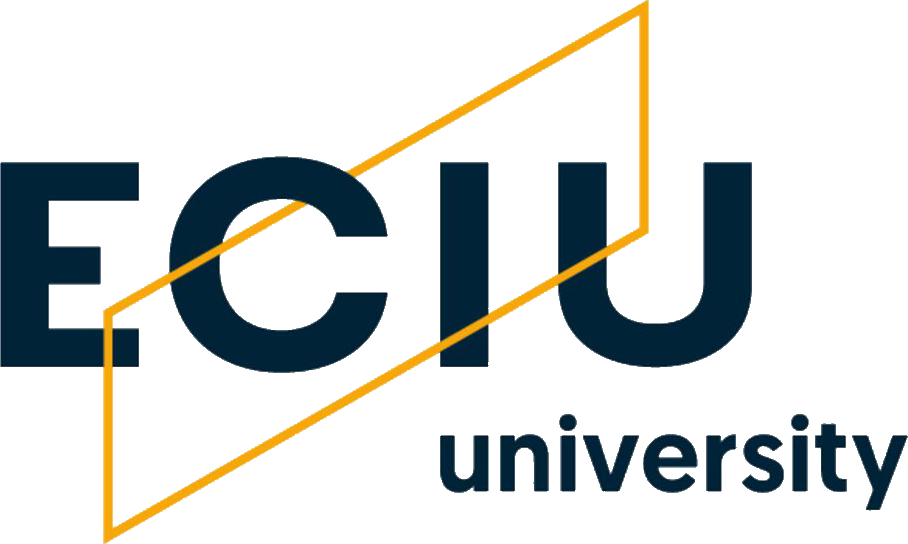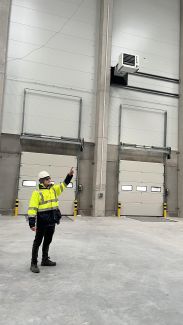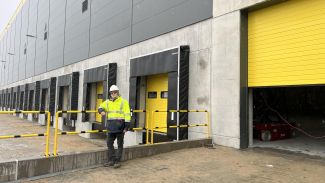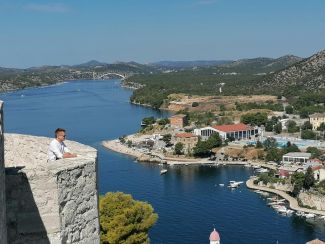The discipline in which you are writing your thesis is closely related to the utilitarian facilities we all deal with. How much of your PhD is theoretical and how much practical?
Civil engineering is undoubtedly a socially responsible discipline. Those graduating with a degree related to civil engineering are entitled to be licensed to design and to manage construction works in various specializations. What is equally important is that both designers and works managers have a direct involvement in the creation of engineering structures that serve the community usually for decades. It is for this reason that I believe my PhD touches on both theoretical and practical aspects.
What research objectives did you set for yourself?
The first objective was to create an algorithm to determine the probability of failure of a structure subjected to time-varying actions, e.g. wind actions. Dynamic (time-varying) analyses are not popularly performed in common engineering practice, despite the ever-increasing computing power of computers and the increasingly sophisticated and extensive capabilities of engineering software. It is now common to perform calculations in which time-varying loads are replaced by their static (invariant) equivalent as permitted by current structural design guidelines although it should be borne in mind that this approach may lead to undesired vibrations of structures that are now increasingly economically designed and therefore potentially more susceptible to dynamic excitation (vibration) going unnoticed.
Another objective, of equal importance, was to use the stochastic perturbation method to carry out the above analysis, which, by design, shows better computational efficiency - reducing computation time while maintaining the desired computational accuracy.
Safety is a key aspect of building any structure. How does your research improve it?
First of all, it must be assumed that every design parameter is subject to a certain tolerance/error/cognitive inaccuracy. Such parameters can be environmental influences, such as wind speed or the thickness of the snow cover on the roof, as well as material or geometric properties of the structure, such as the thickness of structural profiles or geometric imperfections (dimensional inaccuracies of components). These are examples that represent the tip of the iceberg; however, the important point is that not all of these design parameters have an equally strong influence on the safety of the structure. I believe that the results of my research, properly applied to each type of structure, can answer the question of which of the input design parameters should be given very careful consideration, entered into the calculations and ensured on site. This is one side of the coin - the other is that the results can be used to estimate the reliability of existing structures. This, in turn, can be useful whether you want to redevelop a structure, change its use or even simply predict its service life.
What do you look out for when entering a construction site or looking at structures around the world?
No matter where I enter a building site, whether it is an airport terminal, a railway station or a commercial warehouse, my head always goes up. First of all, I always look at the structural solutions of the roof support section - the main girders, the joists and the details involved in the roofing solution. With existing metalwork, for example, I am in the habit of checking that the joints are not coming apart (that the bolts are not loose). On the building site, on the other hand, I pay particular attention to adhering to the sequence of assembly - for example, whether the primary elements are properly braced with elements to ensure their stability before the roof sheathing is laid.
The studies are nearing completion, but the subject is still open. What are your research and development plans for the future?
Indeed, the doctoral studies are coming to an end, and with the answers I have gained, many more opportunities have arisen. I can already see that the result of my work can be further developed, so that both the accuracy of the method can be improved, but also its applicability can be extended. I would also like to directly implement the results of my research into industry, as well as carry out full-scale non-destructive experimental testing on a newly erected building.
From the perspective of a PhD candidate taking part in the 1st IDS admissions, what are the development opportunities for young scientists at TUL?
I kept track of the opportunities that IDS provided for both PhD candidates from the first year of admission (and therefore for me) and for candidates from subsequent admissions. Admittedly, the start of the PhD course was not conducive to international travel through the COVID-19 pandemic. However, there are now many more opportunities for new candidates. The idea related to doing at least a three-month placement abroad seems worth considering, especially in the era of the now newly created Joint Degree/Double Degree opportunities. There are scholarships and grants for the purpose of an internship abroad, as well as numerous grants for conferences and research work. The opportunities for development are undoubted.




